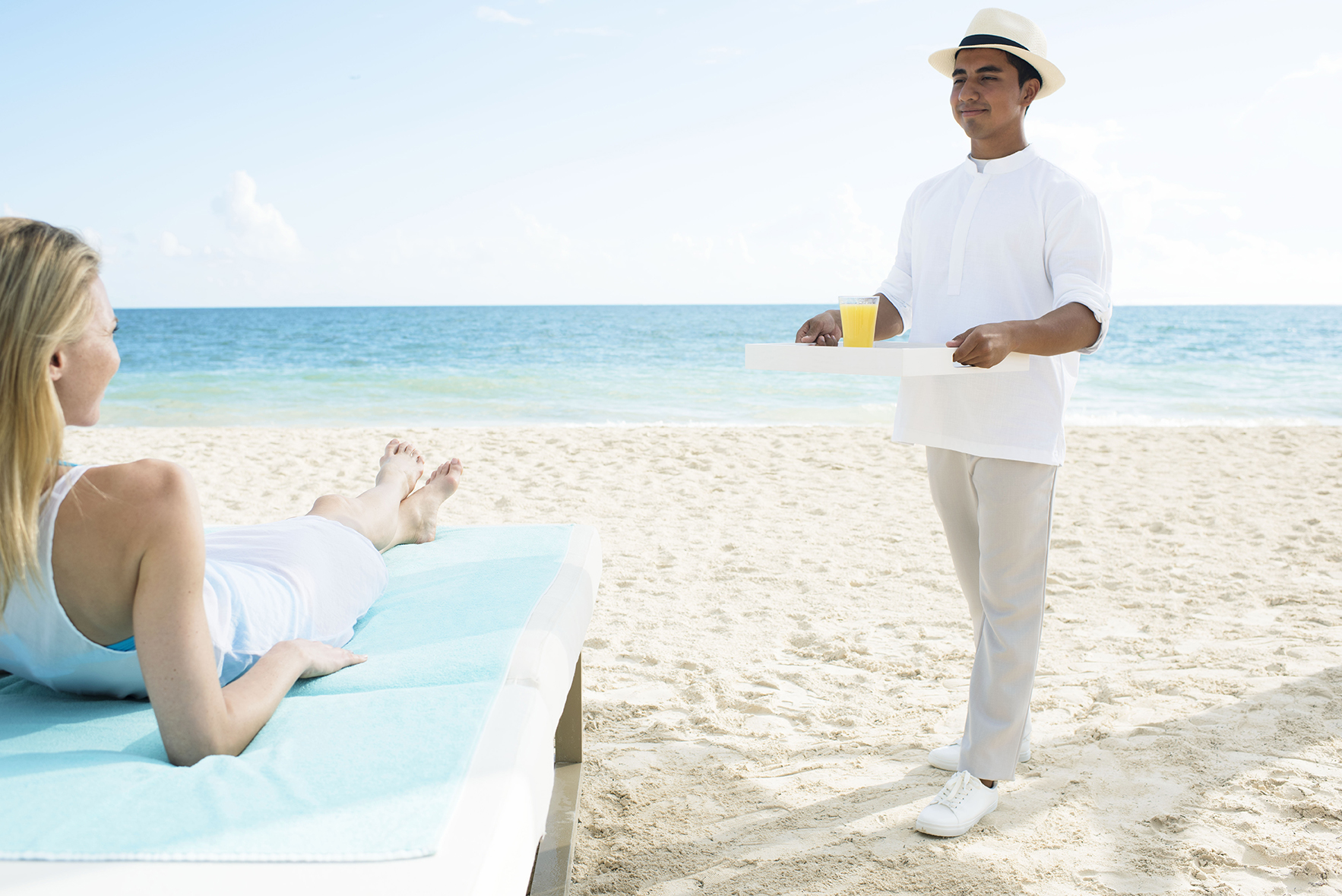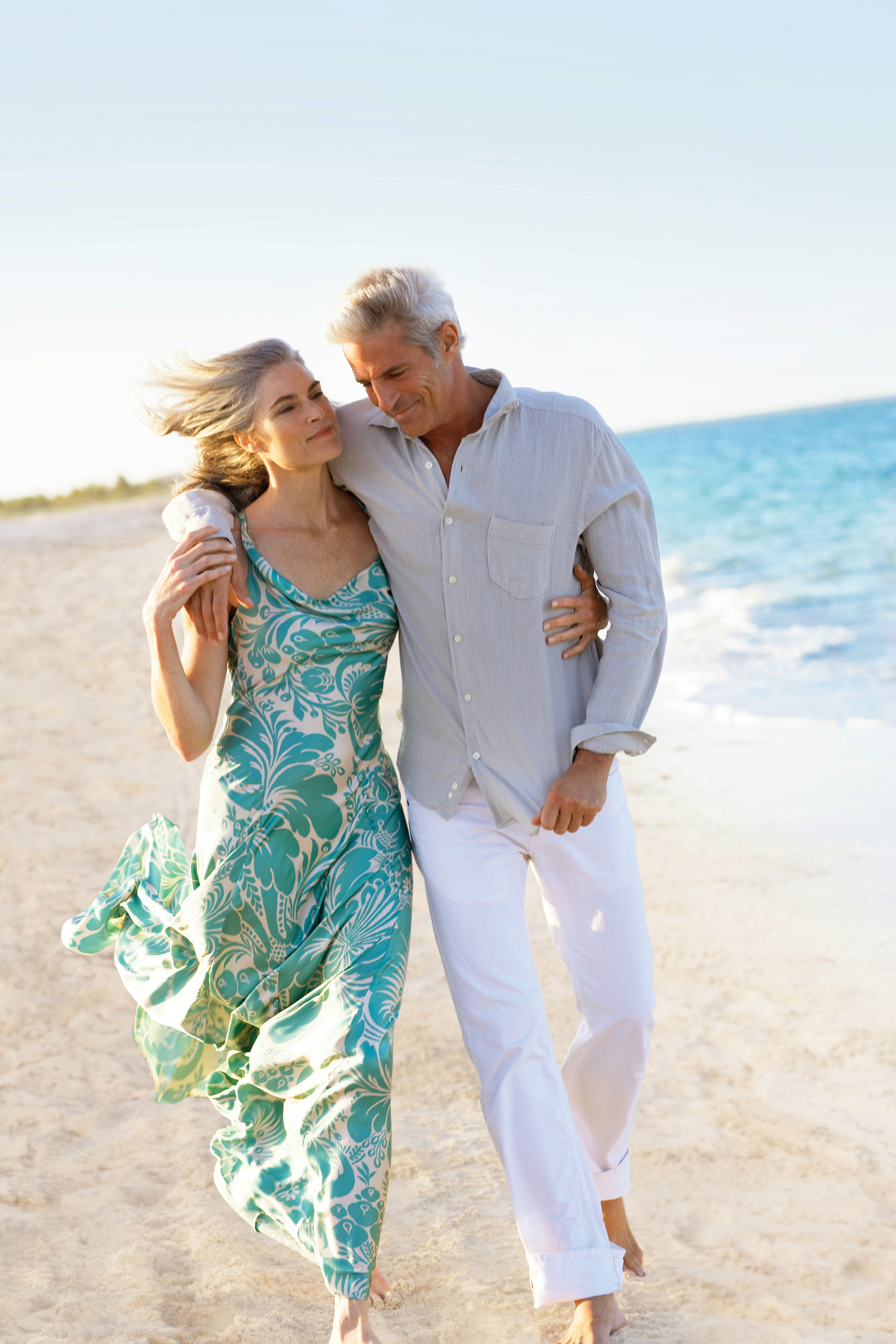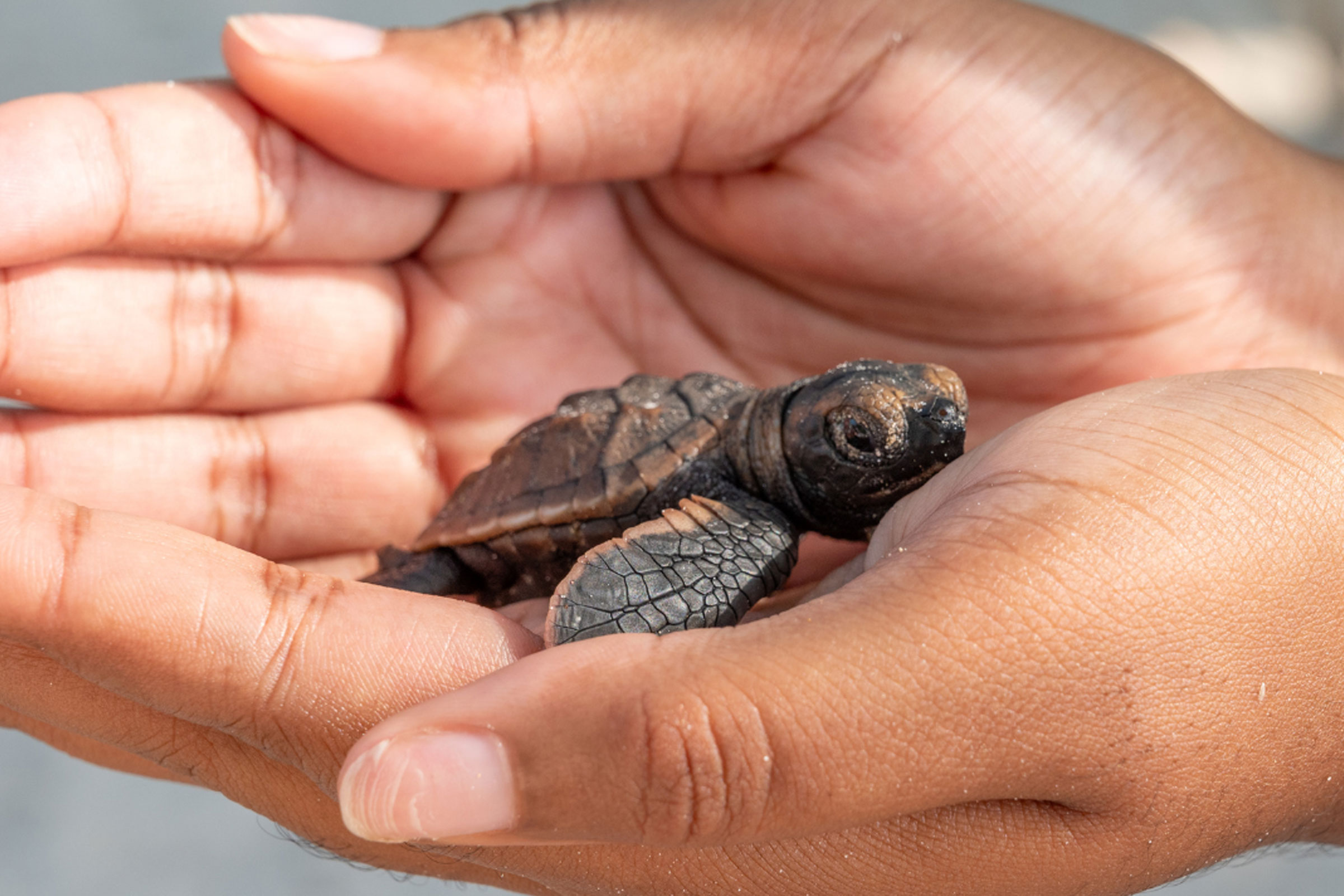Learn About Caribbean Sea Turtles And Hatchling Conservation in Jamaica
Find out everything you need to know about sea turtles in the Caribbean and discover what is being done to protect the hawksbill hatchlings in Montego Bay.
There are very few creatures that are more majestic, more awe inspiring, or more incredible than the sea turtles in the Caribbean Ocean. In this guide, you will learn about several types of turtles, the dangers they face, and what is being done to protect them.
Take a deep dive into the world of sea turtles and get answers to questions like…
What types of sea turtles are in the Caribbean? What do sea turtles eat? How long can sea turtles hold their breath? What is the turtle hatching process? And what is being done to protect the endangered turtles?
Get ready for a lot of turtle answers!
The types of sea turtles in the Caribbean
There are a total of seven sea turtle species around the world and 6 of them can be found in the Caribbean. Whilst we would love to talk all day about turtles we are going to introduce you to just three of these incredible turtle species: Green Turtles, Loggerhead Turtles, and the extremely rare Hawksbill Turtles.
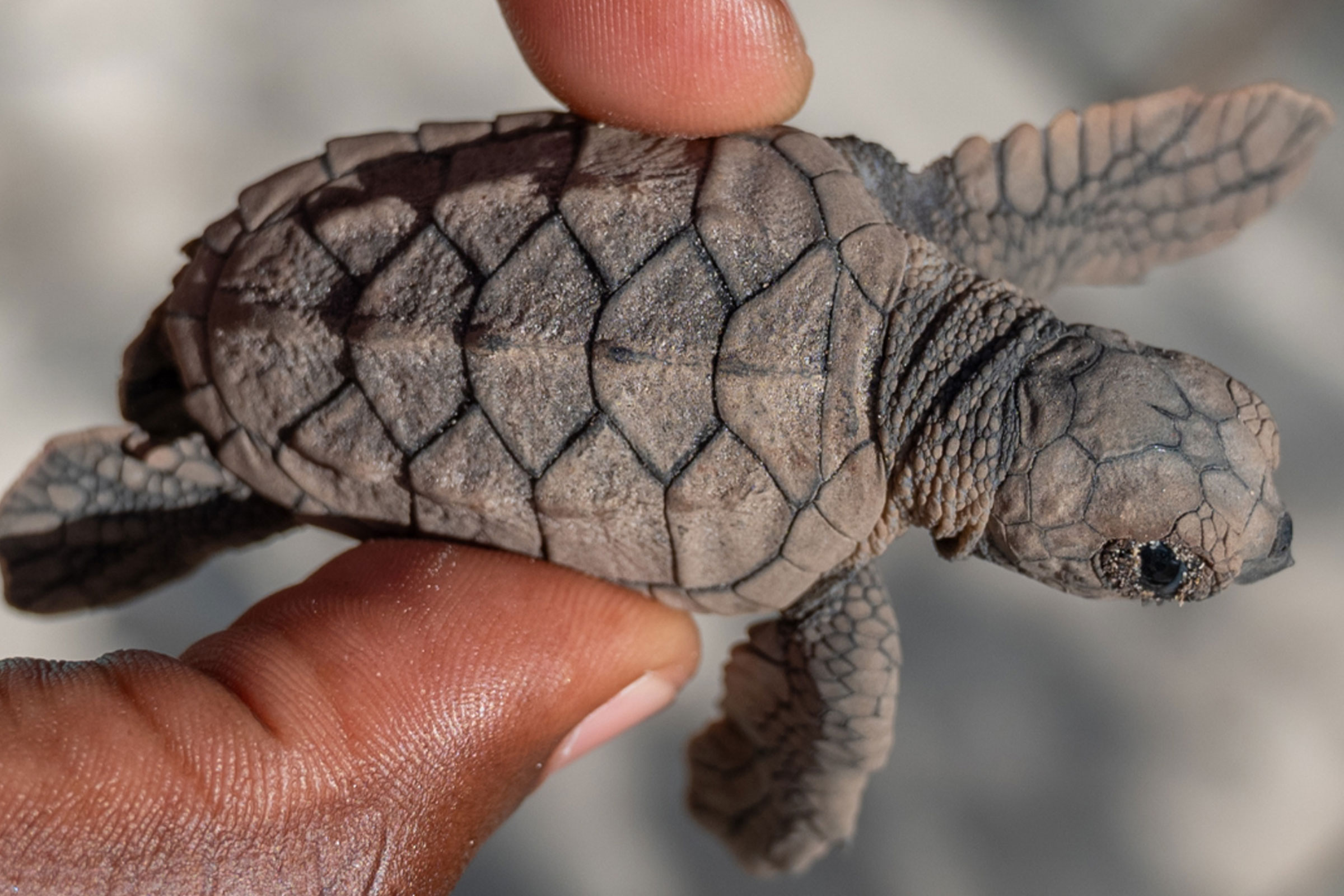
Green turtles
Green Turtles start their lives as omnivores eating whatever small crabs, jellyfish, and other invertebrates they can find. As they reach adulthood however they become completely vegetarian preferring to eat sea grass and other algae instead of ocean life.
Whilst some of these turtles can have a brown shell, they likely got their name due to the many greenish variants that also exist. They are also recognizable for their small head that looks extremely tiny in comparison to their large shell.
These gorgeous beauties are the largest in the turtle world measuring up to three or four feet long and weighing up to three hundred and fifty pounds. That makes them heavier than most people. They can also live as long as we do with healthy turtles reaching up to a hundred years old.
Loggerhead turtles
With migration patterns over the Atlantic and Pacific oceans, one of the most international turtles is the Loggerhead. Gaining its name from its large head that has some powerful chompers perfect for crushing shells, this species is a mostly carnivorous turtle that eats a lot of shellfish from the bottom of the ocean floor.
In addition to maintaining a balance of ocean sediments, the Loggerhead turtle is also an entire habitat for other living things all by themselves. With up to 100 living creatures recorded as being on a loggerhead turtle shell, this is a creature that knows how to work well with its environment.
It also holds the underwater record for sea turtles. Whilst most sea turtles can hold their breath for a couple of hours the Loggerhead turtle has been recorded underwater for over 10 hours. That is a long time indeed.
Hawksbill turtles
These wondrous ocean turtles got their name from their pointy beak that could in a way resemble the bill or beak of a hawk. They also have unique serrated scales on their shells that overlap in a beautiful design.
The Hawksbill turtle is a tropical creature that prefers to remain around the coral reefs and lagoons of the Caribbean oceans. Though their favorite food is the sponges that their beaks hook out of the tiny crevices of the corals, they also eat anemones and jellyfish. Like many marine turtles, they are an essential part of the ocean ecosystem to help maintain the right balance between ocean plant life and healthy coral reefs.
The dangers to baby sea turtles
Life doesn't start out easy for the sea turtle hatchlings. A mother turtle will visit her favorite beach at night during the sea turtle nesting season and deposit her eggs in the sand. Then she returns to the sea. This means that all the eggs are left defenseless as are the baby turtles once they hatch.
With an average incubation period of around 60 days, the eggs have to fend off bacteria, intrusion from plants and trees, fungus, and other creatures. Without proper protection, there can be many eggs that do not even hatch.
Next, the eggs that make it through have to literally face off against the world alone.
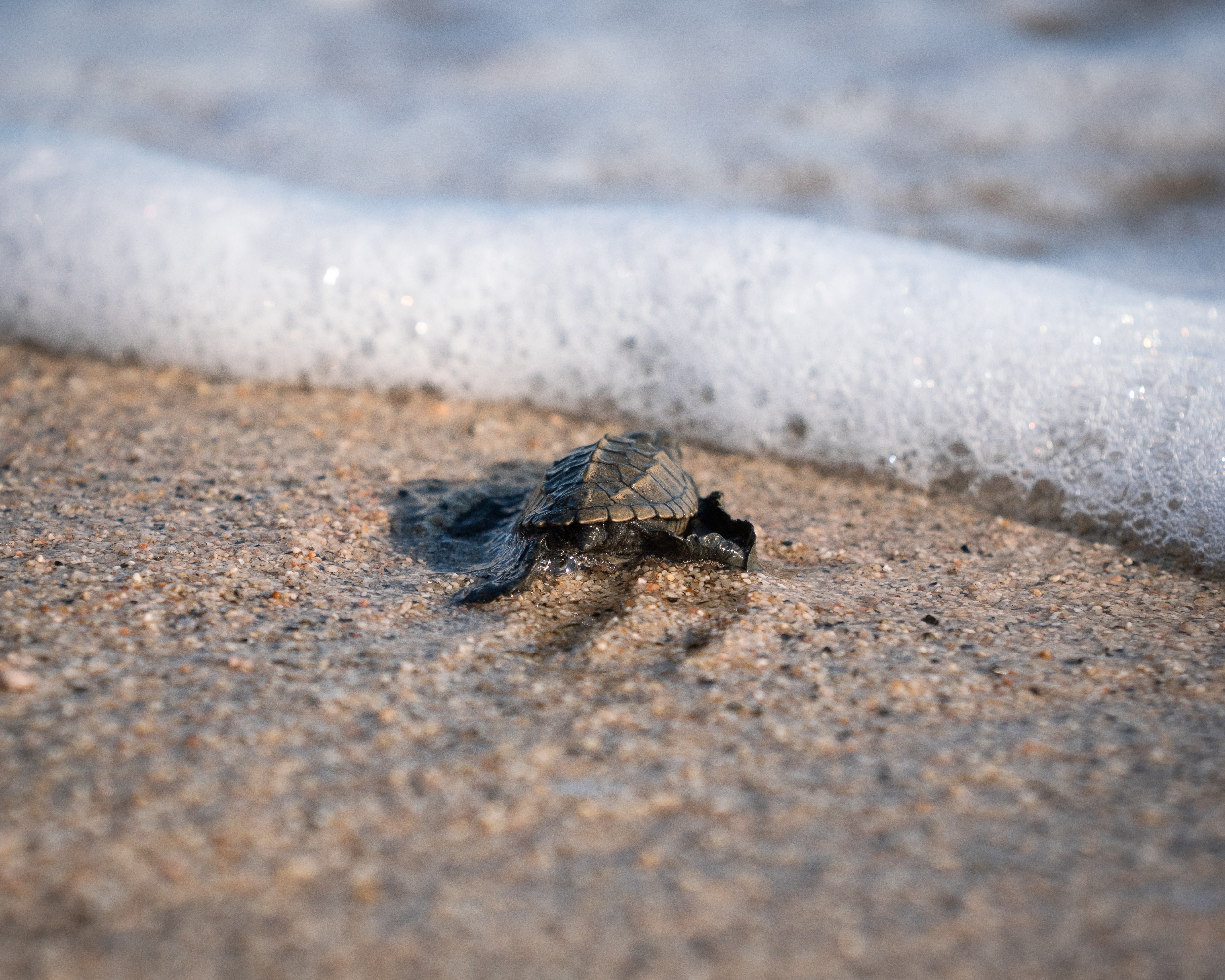
Though Caribbean sea turtles can lay 100+ eggs the quantity of eggs laid does not necessarily impact the increase in population. Why is that? It's because the survival rate of turtles to reach adulthood is about 1 in 1,000.
“How can the survival rate be so low?” you may ask. This is largely due to the initial moments of their life outside of the egg. As soon as they crack the shell and head out into the world they have to make a journey from the nest to the ocean. This is a perilous and dangerous journey for the sea turtles without supervision.
Crabs, birds, and other mammals see these beautiful creatures as easy prey on the sand and prevent many of them from making it to the ocean. Whilst this is part of nature, it is not conducive to endangered species and gives us plenty of reason to protect these baby turtles so that their population can rise and thrive.
Sea turtle conservation in Jamaica
Whilst sea turtles in the Caribbean are generally protected there is one type of turtle that is extremely vulnerable and has been marked on the red list for creatures in critical danger of extinction by the International Union for Conservation of Nature (IUCN). Which turtle is in such need of protection? - The Hawksbill Turtle.
Coincidentally the Hawksbilll turtle is the type of turtle most frequently seen in Jamaica as its beaches, shallow waters, and mangroves provide just the right habitat for its living and nesting needs.
As such, several Hawksbill turtles have started nesting in the long stretching beaches by Excellence Oyster Bay. The resort staff started a protection program with the Oracabessa Sea Turtle Project and identified multiple Hawksbill nests that needed protecting.
This allowed the sea turtle eggs to have safe locations that would not be disturbed by anyone or anything and it also meant that when it came time for their journey to the ocean, everyone was ready to assist. Guests and staff alike joined together to enjoy a unique experience that helped the turtles get to the water safely without interference or interruption.
With the careful guidance and supervision of turtle conservation experts, over 300 baby Hawksbill turtles began their lives in the Montego Bay oceans surrounding this amazing Jamaican resort. Now that's totally awesome!
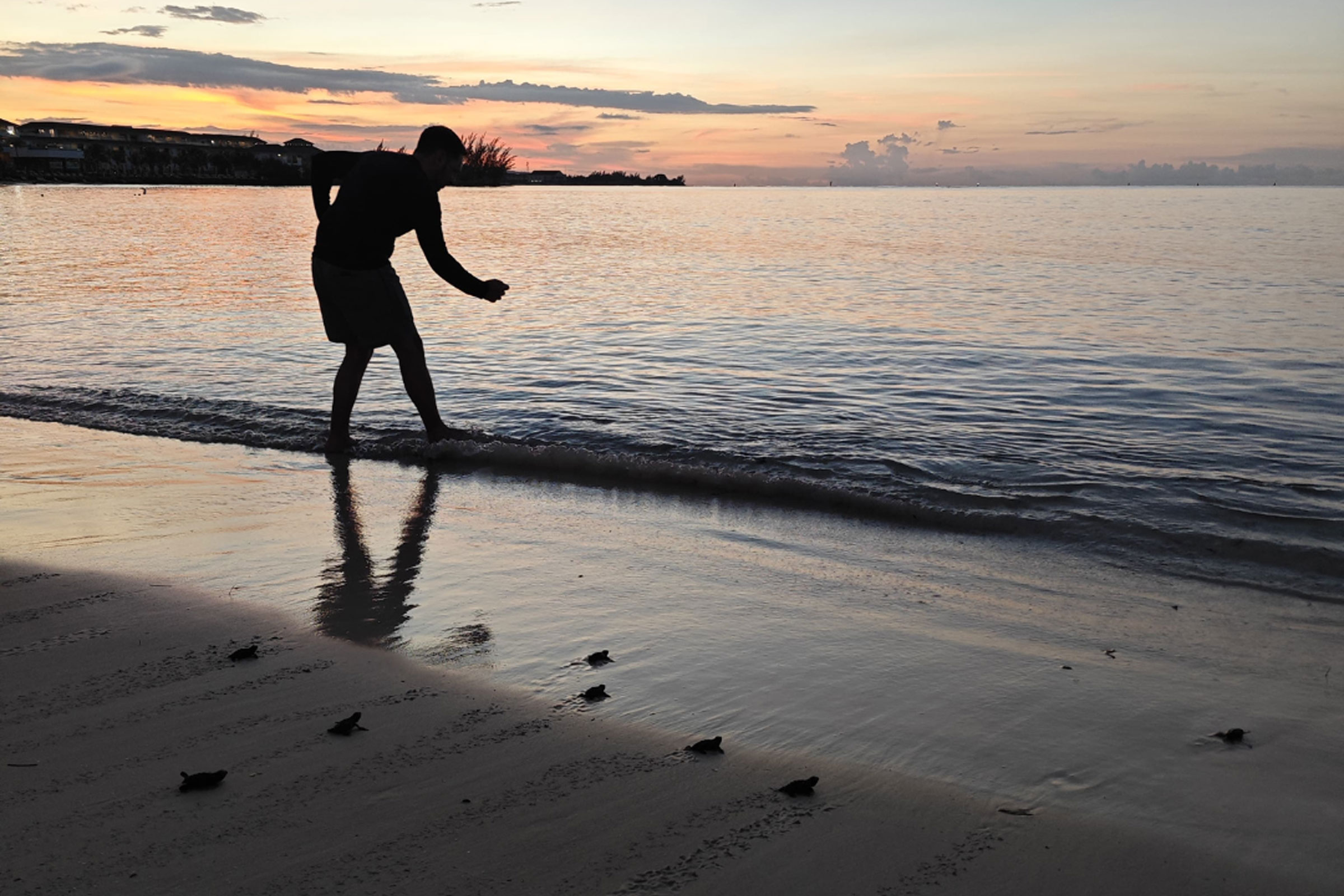
What can you do to help the turtles?
If you are part of a turtle hatching program or activity then there will be guidance and obvious ways in which you can assist. But the hatching period is brief and you might not be there at that specific time. So what can you do to help?
There are many ways to be mindful of the turtle's habitat and to show respect for these wonderful ocean beings. For starters, we might think of what we bring to the beach or the ocean. By being environmentally friendly, avoiding polluting chemicals, steering clear of single use plastics, and cleaning up after our break on the beach, we can keep the sands and sea safer for the turtles.
Another thing we all can do is learn more about them and share our knowledge of the turtle's needs with others. By being aware of the dangers they face and the environmental needs they have, we can show more care through our actions.
If you do come across sea turtles on vacation, then you will behold their majesty and magnificence. But do your best to be respectful, and give them a decent distance so as not to affect their natural behavior.
Something we share with sea turtles…
Yes, we both love the beach and we both enjoy the wonders of the ocean. But did you know that there is something else that we have in common with the sea turtles of the Caribbean? They are well known to return to the same spot by the beach even years later. Turtles make their home in the ocean, and we have our home elsewhere but both of us enjoy returning to the same beaches to enjoy the same comforts in our home away from home.
The 300+ Hawksbill turtles that left Excellence Oyster Bay will likely continue to return to this beachfront paradise as they grow up. Their protection will continue to be necessary and with the help of conservation programs, staff efforts, and guest participation we will all be able to do our best to ensure that these gorgeous creatures thrive in their environment.
Other Articles you may like

Looking for special moments with your bridesmaids? Come and see the benefits of a spa and why you should take some beauty treatments together.
